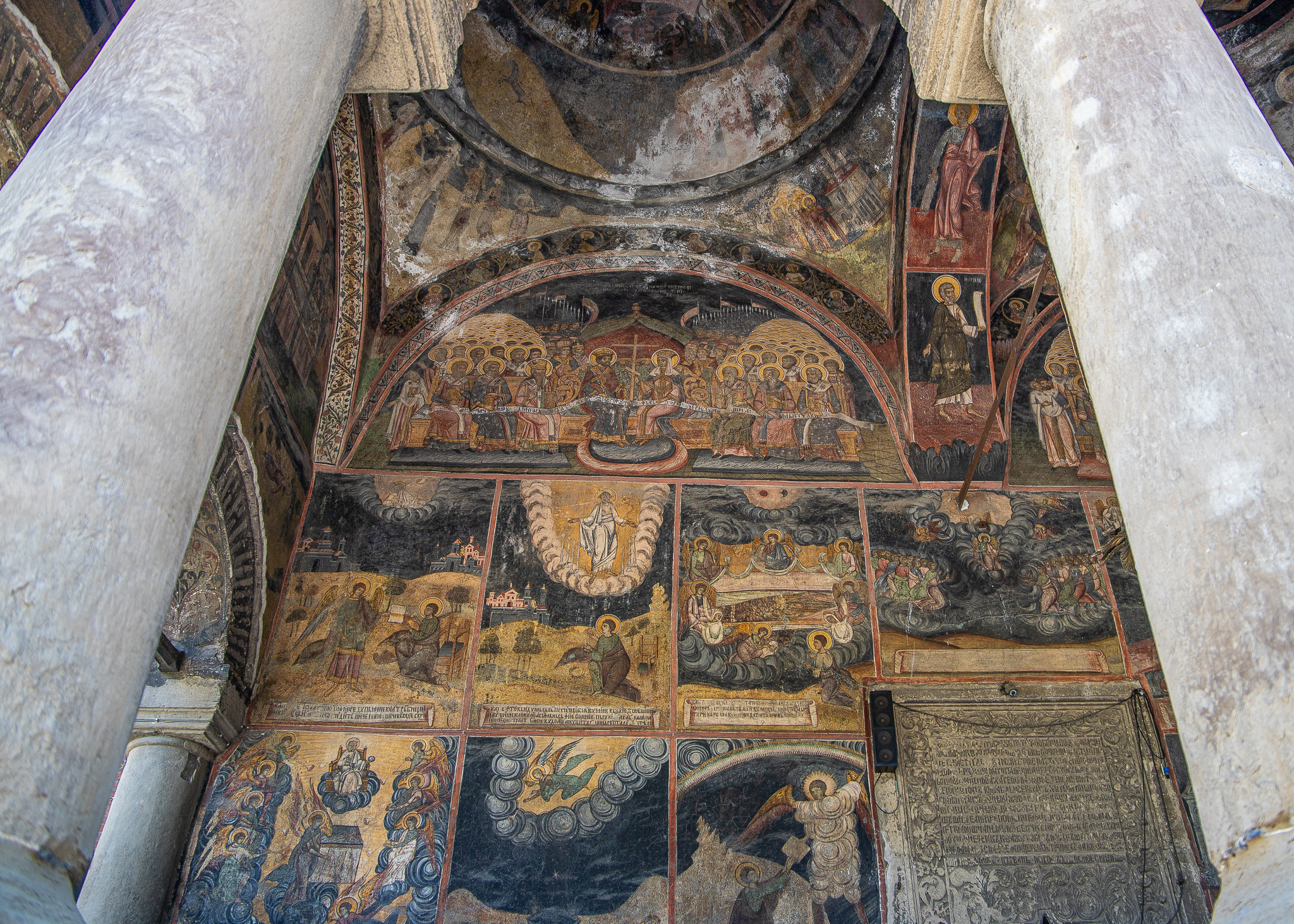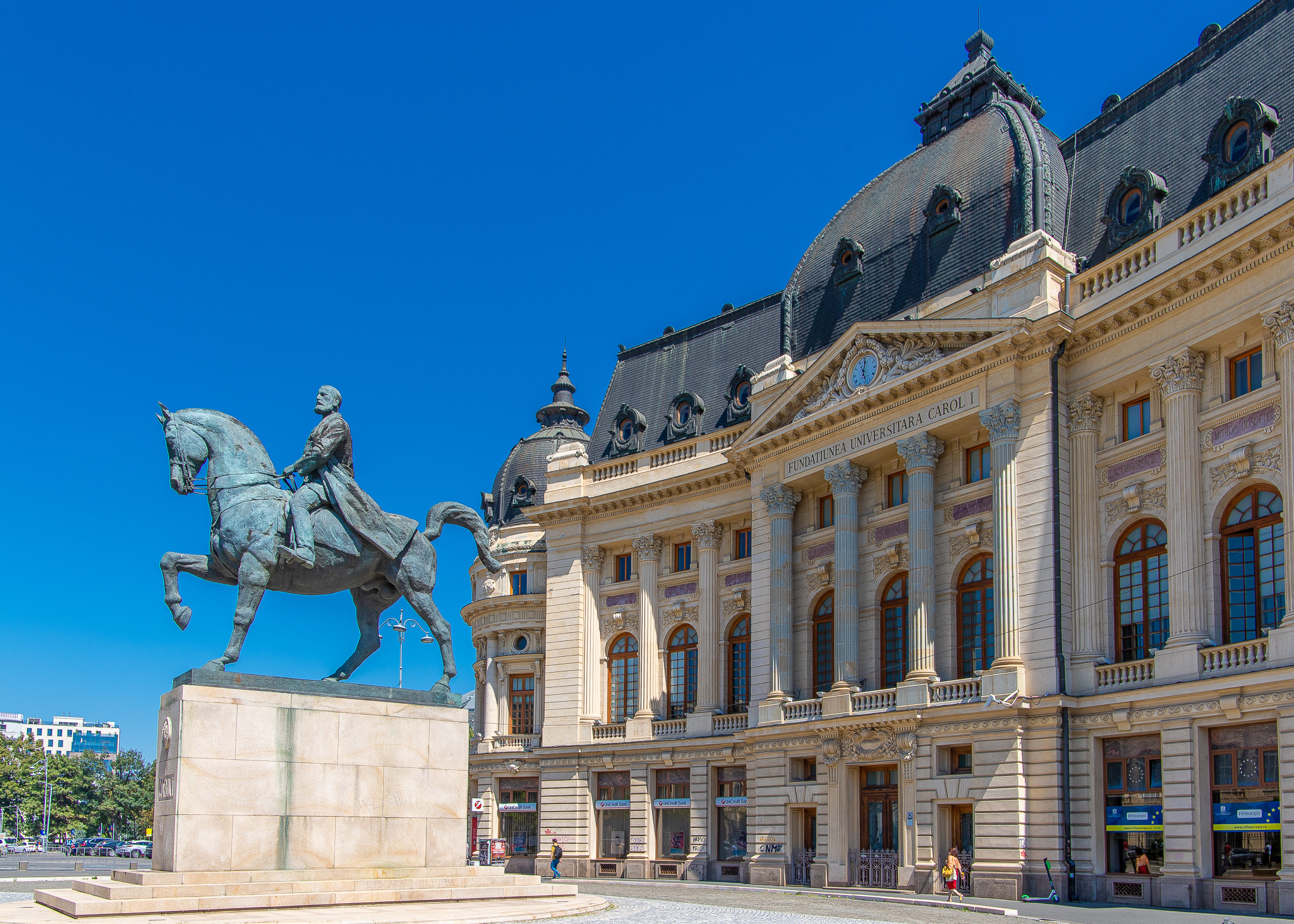it would be fair to say that Bucharest isn’t on too many people’s bucket lists mostly due to it being viewed as a concrete jungle with communist style architecture. Things are slowly on the improve, however, and the revamp of the Old Town is certainly an improvement on what iused to be here as little as five years ago. There are hotels, cafes and pubs all jostling for the tourist dollar, which makes the Old Town district, if not quite packed with people, certainly one with large enough numbers to give the place a buzz. Essentially, it has tarted itself up for partying Europeans which has also resulted in a large number of sex and strip clubs in the same area. Obviously the clientele it is seeking is men looking for cheap booze and eats with some extras thrown in for good measure.
Given we don’t stay out much past 8pm, we didn’t get to see any of the seedier side of Bucharest. Which meant most of what we did see in the Old Town was actually quite nice.
In a city and country replete with beautiful churches, Bucharest also has a few of its own. Next to the Old Princely Court Museum, which is underdoing resoration, is one of Bucharest’s oldest churches and prettiest, the Orthodox Saint Anto Church - Old Cour (Biserica Sfântul Anton). Dating back to the middle of the 16th century AD, the church once served as a chapel for the Royal Court and these days has a nice garden in which sit and watch the flow of traffic going on around you,
Biserica Sfântul Anton
Also situation in the Old Town is the Stavropoleos Monastery Church, which is probably Bucharest’s most touristed church. Built in 1724, this small church had to be rebuilt in the early 1900s after extensive earthquake damage. Beautifully decorated on the exterior walls, the monastery's library also has over 8,000 books of theology, byzantine music, arts and history, should you feel a need to brush up further on any of these topics.
One of my favourite churches, however, was situated just outside the Old Town on Calea Victoriei at one of the corners of Revolution Square, next to the former Royal Palace. Built in the Brâncovenesc style, the Kretzulescu Church was built between 1720 and 1722 was extremely fortunate to have survived the communist period, as plans had been made to pull it down. Pleasingly, multiple restoration works that have been carried out from when the church was built, have not altered much of the original edifice, meaning it has retained the its original identity.
Statue of lawyer and miltiary hero Avram Iancu in front of the Kretzulescu Church
Painting on the exterior walls of the church
The backside of the church with bust of the conservaitve Romanian Politician, Corneliu Coposu
Whilst in this area, it would be a crime not to visit two other beautiful buildings. The first is the Central University Library Carol I, which is a mere 100 metres up the road with a statue of King Carol I standing proudly in the middle of the Palace Square.
Trumping even this lovely building is the gorgeously frescoed Romanian Athenaeum. Built in 1888 and home to the George Enescu Philharmonic Orchestra, the neoclassical concert hall has to be one of the most beautiful sights in the entire city.
Romanian Athenaeum
Bucharest probably has close to 100 churches within its city limits. Not bad, you might think, but when you realise the country has in excess of 18,300 churches, you start to realise just how important religion is to Romanian life. Arguably the most important is that of the Patriarchal Cathedral of Saints Constantine and Helena. The centre of Romanian Orthodox faith, the complex was built between in the late 17th and eartly 18th centuries. Residence of the Patriarch.
Patriarchal Cathedral of Saints Constantine and Helena
Administrative buildings
Bucharest isn’t just churches and cathedrals, of course, and there are still plenty of buildings that have survived the communist and Ceausescu purges that are worth checking out such as the Stock Exchange Palace. Built between 1906 and 1912, the Palace now functions as the National Library of Romania.
The Stock Exchange Palace/Library
The oddly named Palace of the Deposits and Consignments also merits a visit with its glass-paneled dome which is pretty amazing, whether seen in reflection from nearby buildings or up close.
Reflections of the Palace of the Deposits and Consignments
As much as Bucharest has a reputation for being a concrete jungle, it does also have quite a number of parks. We only had time to visit one, the Cișmigiu Park which was quite pleasant, although could do with a bit of a clean-up.
Cișmigiu Park
Bucharest has all the ingredients to be a top-notch destination, but somehow just seems to fall short. There’s a ton of fascinating recent history, a heap of beautiful old buildings and more than enough attractive churches than you’ll ever want to visit. The refurbed Old Town with its cobbled streets, cafes and pubs also provides a certain buzz as well. But it never quite grabs you. Perhaps it’s the strip joints that are dotted everywhere, or the fact that there are also far too many ugly concrete monstrosities from Ceausescu’s reign. Or maybe, it’s just too big. I’m not sure what it is, but neither Veronica or I were taken with the city. And we’re not alone as Bucharesti residents continue to leave the city, with its population having peaked at 2.06 million in 1992 and now numbering 1.81 million. Here’s hoping some of the improvements that have begun are continued and Bucharest continues to improve and once again can be called Little Paris.













